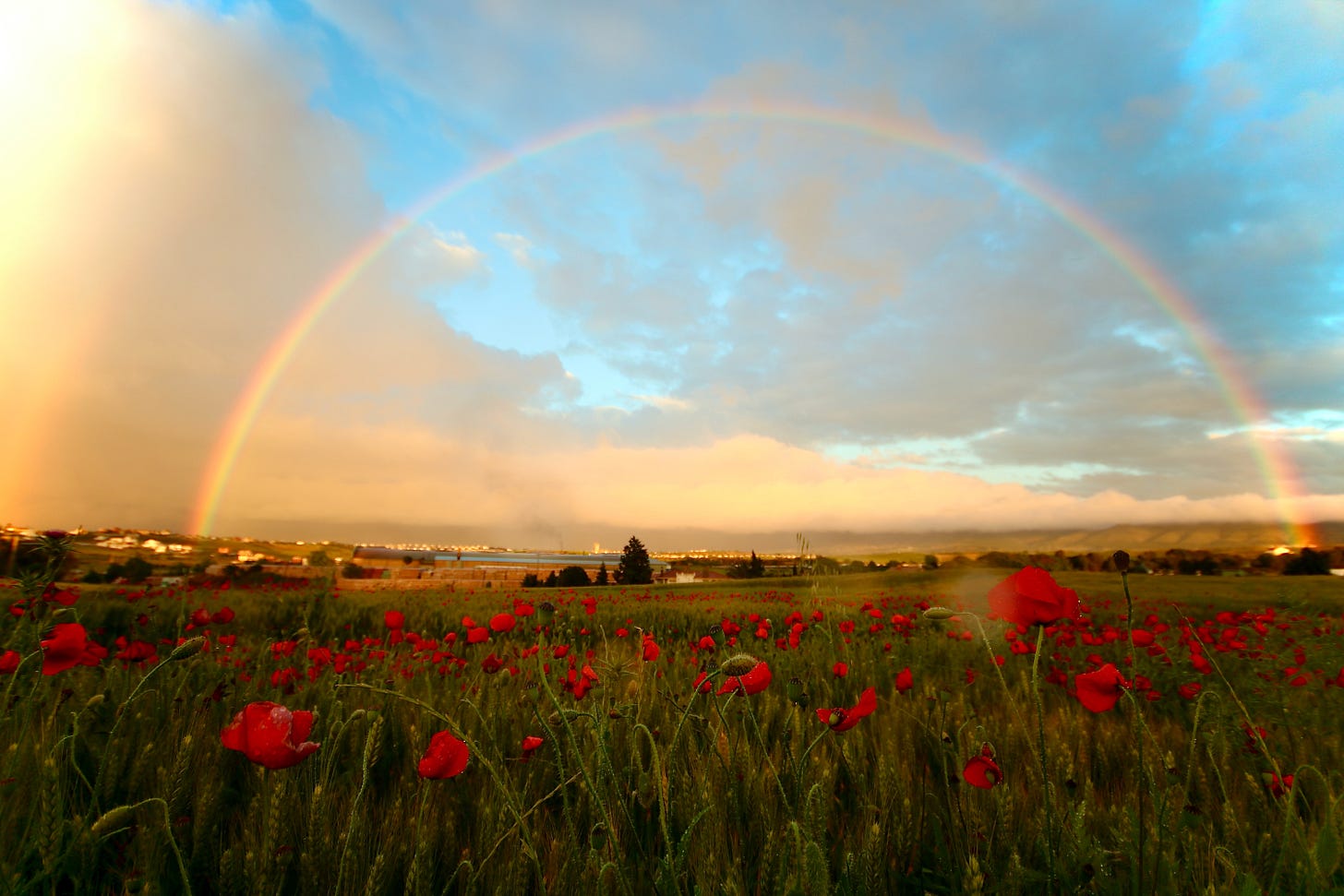Esther Perel poignantly asks “how do we stay grounded when the ground is moving?”1. Despite hearing this prompt many months ago, it’s lingered, both personally, as I navigate the rollercoasters of parenting, and professionally, particularly when supporting healthcare professionals in the staggering challenges they face day-to-day.
Relentless uncertainty, complexity, loss, obstacles, and grief has been overwhelming and depleting individuals, groups, and organizations. The phrases “burnout”, “the great resignation”, “polarization” and “compassion fatigue” have become integrated in our common vernacular. I’ve begun to recognize patterns of learned helplessness and persistent criticism, both towards oneself and others, as we stumble, psychologically exhausted, from all that’s occurred over the past couple of years.
I believe a vital piece that can foster a sense of grounding and help us collectively heal is that of hope.
Last month I attended the Positive Organizational Scholarship (POS) Research Conference. Over lunch the first day, I found myself connecting with a few inspirational scholars who have made remarkable contributions to the field. As we enthusiastically explored various perspectives on organizational flourishing, we turned to the question of how might good intentions and positive beginnings be sustained throughout turbulence and the natural wanes of motivation.
Despite being in much more experienced company, I was asked my thoughts on this query. While initially at a loss of words, the first thing can came to mind was that of hope. I responded “I think there are people in organizations who serve as beacons of hope. That no matter what happens, they continue to send messages of hope that inspire others to persevere”.

We had just heard the incredible research of Katina Sawyer and Judy Clair, who had been recognized with the Award for Outstanding Published Article in POS (good news! you can watch the recording of Katina and Judy’s keynote here). Their research2 followed the experiences of residents and staff at Light for the Future, a residential program for women who experienced gender-based violence. Over the course of two years, they observed the collective hope of the organization ascend to great heights as people convened around shared purpose and enthusiasm, plummet to depths of despair when tragedy struck, and begin to reemerge in recovery and a reimagined future.
What I noticed in hearing the story was that there was never a complete absence of hope. Yes, doubt and despair were central in the depths of the journey, but even though the hope statements and actions weren’t loud and prominent as before, they were still there. Like subtle whispers and glimmers, small messages of hope prevailed. I am incredibly intrigued by these patterns, and what resourced these messages of hope during the organization’s darkest days. Who stood as beacons of hope when all seemed lost? How did this hope offer a safe haven in navigating trauma and disappointment? In what ways did the whispers of hope foster resiliency that enabled the organization’s renewal?
Exploring Hope
Hope is often misconstrued as wishful thinking, e.g. “I hope you have a great weekend!” or “I hope we can succeed!”, where consideration of planful or committed action is noticeably absent. Despite assumptions to the contrary, hope doesn’t dismiss suffering or hardships (earlier I wrote about the importance of both the bad and the good, see 'Embracing the whole human experience')
Hope includes deep compassion and willingness to see pain. It’s holding possibility, even when the future seems unclear. A peer in the Integrative Development program I’m in recently introduced me to the colloquial English word ‘coddiwomple’, which means to ‘travel in a purposeful manner towards a vague destination’. Hope can be a form of coddiwompling, when one’s actions are in congruence with their values and intentions.
In exquisite poetry, Charles Richard Snyder, a prominent researcher of Hope Theory wrote3:
“A rainbow is a prism that sends shards of multicoloured light in various directions. It lifts our spirits and makes us think of what is possible.
Hope is the same - a personal rainbow of the mind.”

Snyder defines hope as having three main aspects:
First, there’s a desired future state that offers an anchor,
Second, various pathways can been seen as ways to that desired future,
And third, a belief that you have the agency and capabilities to get there.
Hope is saying “I know what I want, I know I can get there, and I know that even if I falter, there are many ways of getting there”. I believe hope is part of the elusive magic that makes coaching so powerful, whether one-to-one or in groups.
Hope is also considered a central construct in psychological capital, which influences one’s confidence and ability to bounce forward when experiencing adversity4. It partners with efficacy, resiliency, and optimism, and is a resource that can be intentionally developed (as opposed to a trait you’re born with)5.
Moving beyond an individual level, Sawyer and Clair’s research further clarifies the implications of hope cultures within organizations6, where the intensity of collective hope influences vitality, wellbeing, and goal attainment. It’s found that hope cultures are cultivated through two mechanisms, narrative sense-making (the stories that help interpret significant events) and emotional contagion (the spread of emotions among a group), and permeates everyday norms, language, and artifacts via a collective desired future, intentional methods and practices to achieve a stated future, and a sense of collective agency.
Generating Sparks of Hope
What happens when hope plummets? When negativity proliferates and the stories shared result in a collective sense of surrender to impossibility?
I recall a conversation with a leader back in early 2021. The pandemic fatigue was prominent on their team, impacting both relationships and effectiveness. Upon being asked “what can be done to help improve this situation?”, they responded “you know, it’s just something everyone is going through right now. We simply can’t escape it”. I still feel the heavy sigh accompanying those words.
I was so longing for the team to propel themselves to a better future. It was within their agency, not to eradicate the challenges they were facing, but to realize their own inner resources and navigate the circumstances as well as possible. The painful drop of the rollercoaster needn’t be so deep or long.
It brings me back to beacons…
Rosamund Stone Zander and Benjamin Zander, in their text ‘The Art of Possibility’ offer the practice of enrollment, described as “generating a spark of possibility for others to share” (p. 125)7. They continue with:
“Our universe is alive with sparks. We have at our fingertips an infinite capacity to light a spark of possibility. Passion, rather than fear, is the igniting force. Abundance, rather than scarcity, is the context…
…The life force for humankind is, perhaps, nothing more than the passionate energy to connect, express, and communicate. Enrollment is that life force at work, lighting sparks from person to person, scattering light in all directions. Sometimes the sparks ignite a blaze; sometimes they pass quietly, magically, almost imperceptibly, from one to another to another.”
“And even if tomorrow brings new unanswerable questions, and the future unfolds into even more complex mysteries, you have somehow caught up to some once hidden hope.
A hope that grows as the horizon extends before you, possibility spells itself out in the form an exhale, and just for a moment, it becomes undoubtedly clear that even here, hope was waiting for you.” - Morgan Harper Nichols
At Light for the Future, it’s quite possible that someone somehow was continuing to ignite quiet and imperceptible sparks of hope that caught hold as the organization rebounded to new possibilities.
It inspires me to consider that hope may just be waiting for us all.
Reflections and Practices to Cultivate Hope
Consider who and/or what serves as a beacon of hope in your life and work? How might they/that become an anchor for your desired future?
What are the messages of hope that are shared in your team and organization? Remember it’s not just in the language, but also in the everyday norms and actions.
Observe and acknowledge stories and emotions. When times are difficult, bring people together. Turn towards one another in connection to recognize the common humanity in adversity.
Explore the possible pathways towards your desired goals. Discover where you have choice and create contingency plans in the event of barriers. Be intentional about the practices that move towards your desired future.
Empower, empower, empower. Encourage agency and shared decision-making. Embolden those in the organization to recognize their collective and individual capabilities.
Invest in coaching. Inherent in its process is a cultivation of hope. Whether one-to-one, group, or team, coaching is a powerful mechanism for hope.
Unlocking Us with Brené Brown: Partnerships, Patterns, and Paradoxical Relationships with Esther Perel (September 22, 2021). https://brenebrown.com/podcast/partnerships-patterns-and-paradoxical-relationships/
Sawyer, K. B., & Clair, J. A. (2022). Hope Cultures in Organizations: Tackling the Grand Challenge of Commercial Sex Exploitation. Administrative Science Quarterly, 67(2), 289–338. https://doi.org/10.1177/00018392211055506
Snyder, C. R. (2002). Hope Theory: Rainbows in the Mind. Psychological Inquiry, 13(4), 249–275. http://www.jstor.org/stable/1448867
Luthans, F., Youssef-Morgan, C. M., & Avolio, B. (2015). Psychological capital and beyond. Oxford University Press.
Luthans, F., Avolio, B. J., Avey, J. B. & Norman, S. M. (2007). Psychological capital: Measurement and relationship with performance and satisfaction. Personnel Psychology, 60(3), 541–572. https://doi.org/10.1111/j.1744-6570.2007.00083.x
Sawyer, K. B., & Clair, J. A. (2022). Hope Cultures in Organizations: Tackling the Grand Challenge of Commercial Sex Exploitation. Administrative Science Quarterly, 67(2), 289–338. https://doi.org/10.1177/00018392211055506
Zander, R. S., & Zander, B. (2002). The art of possibility. Penguin Group.




Thank you so much for this glorious call to hope. So very greatly needed and appreciated.